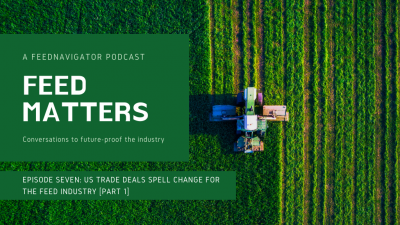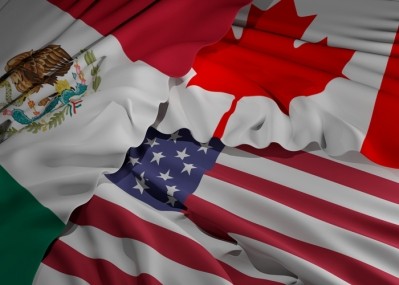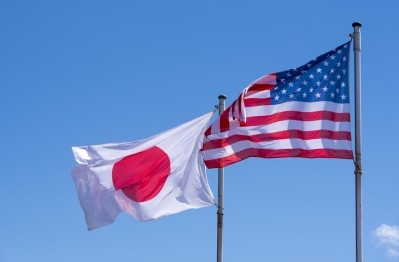reports from IPPE
AFIA trade priorities look to limit market choke points for feed industry
Ranging from having the US, Canada and Mexico all ratify the updated NAFTA trade agreement, now called the US, Mexico, Canada Trade Agreement (USMCA) to improving market access in China, the American Feed Industry Association has multiple trade areas it is watching, said Gina Tumbarello, director of international policy and trade with the American Feed Industry Association (AFIA).
She shared with us some of the discussions that the AFIA has been following at the International Production and Processing Expo (IPPE) in Atlanta.
The progress made in the new agreement with Canada and Mexico was encouraging, said Tumbarello. The previous trade agreement – the North American Free Trade Agreement (NAFTA) – was positive for the feed industry.
Mexico and Canada rank in the top three markets for the US, she said. “We want to continue to have that type of trade relationship and the USMCA allows us to do that and gives us an avenue to enhance that trade relationship,” she said.
Currently, the AFIA is hoping to see “swift ratification” as the trade deal does not go into effect until it has been ratified by all three countries, she said.
And there have been some discussions that the current administration could leave NAFTA to encourage the process to move forward.
“NAFTA right now is the place holder until the new trade deal is ratified, and there zero tariffs right now and there’s a lot we get from NAFTA,” said Tumbarello. “We don’t want to go back to pre-NAFTA rules for those very large and important markets.”
NAFTA and steel tariffs
Although the USMCA has been negotiated, there are still challenges with the markets in Canada and Mexico, said Tumbarello. Tariffs remain on steel in both countries and retaliatory tariffs were placed on US products.
There is a good deal of interest from the agricultural industry to have the tariffs lifted, she said.
“If we look at what’s going on with Canada and Mexico, we finished a trade deal we signed that trade deal we want to ratify it but our steel tariffs are still in place with Canada and Mexico and that’s kind of sending a message to other potential trade partners with what they might expect,” she added. “It’s a difficult situation to be in when we know the message that other potential negotiation partners are receiving.”
Chinese market considerations
In addition to tariffs from Mexico and Canada, the US also is facing tariffs and market challenges with China, said Tumbarello. However, for the feed industry, there also are other concerns about market access.
“For our industry, the biggest challenge with this tariffs war isn’t necessarily the tariffs, while those are affecting our industry, it is [around the] communication that we had been trying to have with the Chinese,” she said. Those discussions involved governmental agencies addressing technical and regulatory topics and they have stopped, she added.
The AFIA has been trying to bring up some of the topics with negotiators as talks between the two countries continue toward a potential March 1 deadline, she said.
Current US tariffs on Chinese products might increase after that point if trade negotiations have not made progress.
“I’d hate to see the tariffs increased on March 1; I think that would be very detrimental,” she said.
Additionally, the US could see tariffs imposed on feed additive imports previously unaffected, such as vitamins, she said.
"We import a lot of vitamins from China … that’s a huge deal – vitamins go into a lot of feed, animal food, pet food production and the majority of [them are] sourced from China, that would seriously have an effect on production costs so that’s what we’re looking at - how do we avoid that.”
Other US-China trade constraints include the registration challenges imposed by China. If a US facility is not registered in China then it cannot export products there.
“We have about 150 facilities on our list that want to register that represent over 400 different products,” she added.
The AFIA had been working to help establish a protocol to enable US feed facility registration in China, said Tumbarello. “When communication lines shut down we can’t make movement on that, we can’t help them understand how our industry works so they can set the requirements so that facilities [know what they] need to do to become registered.”
Bilateral trade deals: looking to the EU and Japan
In addition to the USMCA and ongoing trade negotiations with China, there remains interest in seeing progress in potential bilateral discussions with several current trading partners including Japan and the EU, said Tumbarello.
Negotiations with Japan and the EU are somewhat unique, she said. The US had already completed negotiations with Japan and several other countries in the Trans-Pacific Partnership (TPP) but then exited that process.
“Now we want to go back to the table, but now it’s just the two of us,” she said. “I suspect that coming back to the table is going to be a little challenging because each side is going to want a little more than what they got out of the last negotiations.”
However, there could be much to gain as the region is one of interest and there are still some tariffs in place between the countries, she added.
“Japan is a great opportunity for our industry,” Tumbarello said. “But there’s more to be gained there, there are still some market access restrictions that keep us from fully competing.”
Similarly, with the EU, the US previously was involved in negotiations, which ultimately were not competed. “We got fairly far into negotiations when we were doing the Transatlantic Trade Investment Partnership (TTIP) – negotiations that stalled and halted when the Trump administration came into office,” she added.
However, the potential discussions are facing some challenges, as the negotiating objectives for the EU and the US do not completely align, she said.
“Agriculture is not on the European’s agenda,” she said. “That’s not something we as a feed industry can support. We want to see a comprehensive, all-inclusive trade agreement where everything is on the table.”
There is interest in trying to address the use of science-based standards and risk-based measures as the current agreement through the World Trade Organization (WTO) has not completely addressed some issues, said Tumbarello.
“Using the USMCA as a model again here with the European Union would be really beneficial to our industry – but that only works if we can sit down at the table and discuss those opportunities.
“Our big hurdle right now is continuing to push our government to stress the importance that agriculture be included in any negotiations, otherwise that’s not comprehensive negotiation. There’s no guarantee that agriculture will be addressed at a later time – let’s make it a big one, package deal.”














